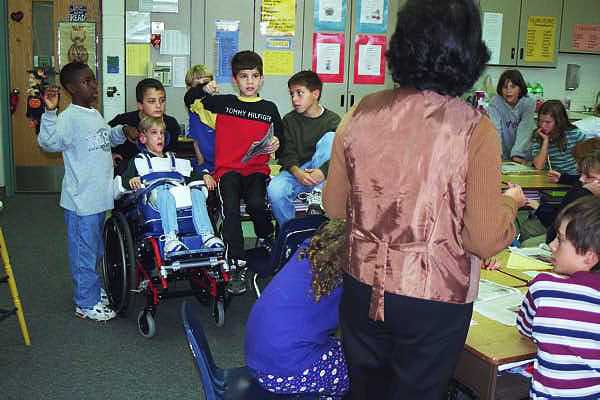 So what to do?
How do schools and the teachers and parents of children in them deal with
this wide range of diversity?
So what to do?
How do schools and the teachers and parents of children in them deal with
this wide range of diversity?Introduction to Whole Schooling
Go to any classroom in any school anywhere in the world and you will find a huge diversity of children. If you’re a teacher, you know this as you think about your students. Their personalities, interests, what sets them off and turns them on are dramatically different. These vast differences are clear even if the class is filled with all ‘normal’ children of one skin color. Combine these amazing differences with the others that most often come to mind when we use the term ‘diversity - race, culture, country of origin, language, gender, sexual preference - and the job of those that help children become valued and productive adults can feel daunting. Add characteristics that impact the cognitive, social-emotional, and sensory physical abilities of children (disabilities, giftedness) and the job is even more challenging.
 So what to do?
How do schools and the teachers and parents of children in them deal with
this wide range of diversity?
So what to do?
How do schools and the teachers and parents of children in them deal with
this wide range of diversity?
With colleagues throughout the world we have developed an approach to teaching and schooling that creates education where children with vast differences learn together well. We call this approach Whole Schooling.
The ultimate goal of Whole Schooling is to promote excellence and equity in schools to build inclusive and democratic societies. We seek to help children learn at their personal best and to become effective citizens for democracy-- innovative leaders, workers, arents, and community members who can create innovations and take responsibility for a better world. Whole Schools create cultures and utilize practices to achieve these aims that: (1) create learning spaces based on hte needs of children learning together; (2) help children learn the tools and skills of genuine democracy; (3) create a sense of belonging, care, and community; (4) include all students in learning well together; (5) support learning through the efforts of peers, colleagues, and specialists in the classroom; (6) develop genuine partnerships between educators, parents, and the community; (7) engage children through authentic, multilevel, differentiated instruction — connecting learning to the real world and drawing on the gifts, voices, experiences, and cultures of all at the ‘just right’ level of each child; and (8) assessing students in ways that will contribute to learning.
To achieve this end, schools must create a culture and use a set of practices that engages children and youth in authentic problem-solving and exploration, a culture where personal best learning, care, and empowerment are central. Such schools are founded on Eight Principles and their associated practices.
1. Create learning spaces for all
2. Empowering citizens for democracy
3. Including all in learning togehter
6. Partner with families and the community
7. Teaching using authentic, multi-level instruction
8. Assess students to promote learning
Click HERE to see a video on Whole Schooling from MacArthur Elementary School in Southfield, Michigan, USA.